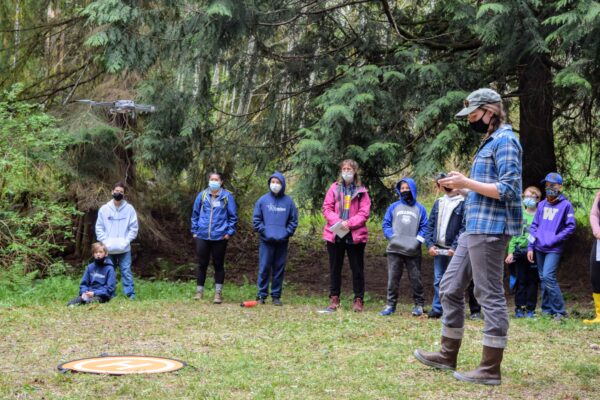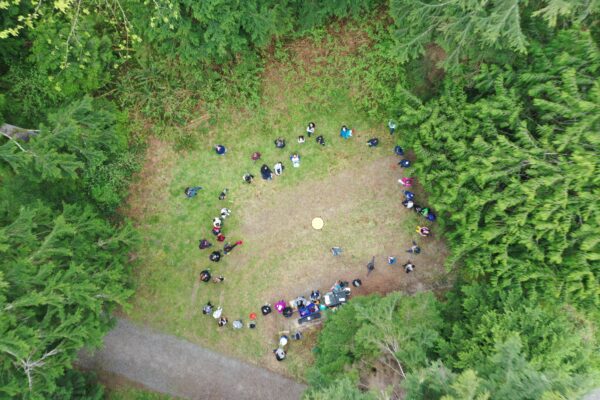Sierra Kross, Land Labs Education Coordinator AmeriCorps VISTA, guest posts on the inaugural Land Labs fieldtrip at GPC’s Curley Creek Tyner Preserve, where many students met face-to-face for the first time after a year of virtual education!
GPC’s Land Labs program aims to partner with local public schools to provide hands-on science projects that meet state learning standards. It engages students directly in big picture environmental concerns affecting their local communities and connects them to future career possibilities.
The sounds of fifth graders exiting the bus brought Land Labs to life on April 20, 2021. We watched as they funneled off the bus and took in the new land before them. These students were lively, ready to tackle new experiences, and were almost running towards the preserve to start exploring. Once they slowed down their pace, they started observing stumps with trees growing on top of them, bat and nest boxes installed by community members to monitor wildlife, and captivating fuchsia salmonberry flowers. From sitting in front of a computer to walking through a preserve, these students were in a completely new setting on a school day.
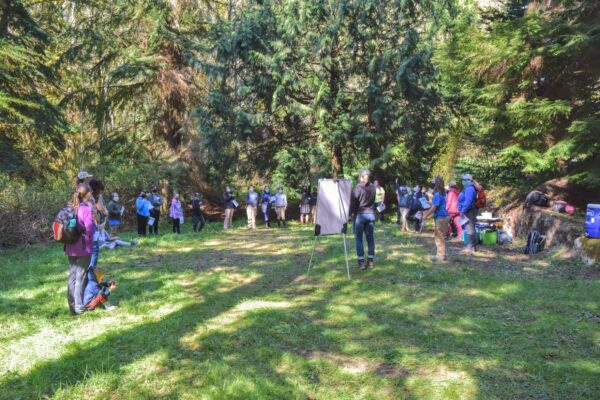
We prepared for this contrast and introduced students to the Curley Creek Tyner Preserve by providing an opportunity to explore, record thoughts, and develop curiosities upon their arrival. I marveled in the students’ commitment to record observations in journals we provided, which offered an opportunity for less vocal students to reflect on the sights of the preserve.

I watched as a student touched the tiny indents between a western red cedar’s set of leaves and noticed the texture and shape. Land Labs staff guided students to develop curiosities about what they were exploring by asking “What do you wonder?” and “What does it remind you of?” These simple yet poignant questions can guide a student from saying an identifying statement, such as “it’s a leaf,” to “I notice the separated sections in one leaf, which reminds me of a puzzle, and I wonder how this structure gives the plant more energy.” Seeing students use their sense of touch to interact with nature in a time when most senses are stifled brought joy to my heart!
With journals in hand, students were ready to monitor the ecosystem via plotting invasive plant populations at the “Investigation Station” or looking at organisms and their habitats up close at the “Ecosystem Exploration” activity.

In the Ecosystem Exploration, we invited students to explore organisms up close. The Curley Creek Tyner Preserve has many intriguing habitat features, including a pond, salmon stream, and diverse forest where all types of organisms inhabit. Tools such as hand lenses, magnifying containers, and nets traveled with us to discover how different organisms retrieve their resources. Students from each habitat came back with an organism to share, even imitating the way one moved through the water. Other than their incredible discoveries, they gave their habitat a “Habitat Health Rating” to ponder how successful their organism could retrieve resources to survive. Summed together, this was our “Ecosystem Health Estimation.” For those students who appreciated numbers, this helped drive the idea that we can monitor ecosystem health over time.
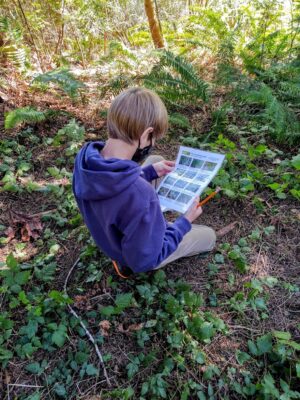
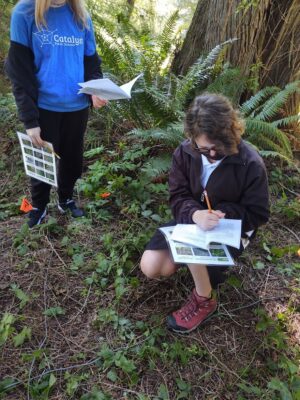
At the Investigation Station, students used compasses and plant guides to explore separate plots. Each plot had a diversity of plants to explore, purposely designated to offer distinct results. Using observation skills, students used the descriptions and images on the guides to assess which plants were in their plot. Some marked the exact species in their journals, others drew what plants they saw, but all concluded that not all plant populations were balanced. We then drew attention to the scotch broom problem on the preserve. Left untouched, scotch broom can grow out of control and create a definite imbalance in the ecosystem. Students learned how we term a non-native species unbalancing an ecosystem, invasive, and discussed solutions to this issue. These problem-solvers of tomorrow left the Investigation Station perplexed by the threat of invasive species, yet ready to participate in a potential solution for the problem after lunch—scotch broom removal and tree planting.
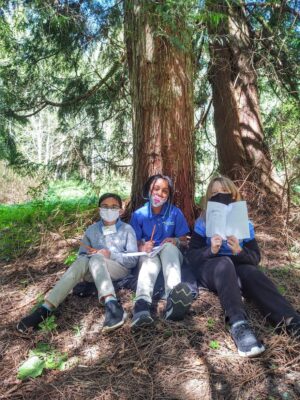 Fifth and sixth grade together removed 3500 sq. feet of scotch broom, planted 16 trees, and left the preserve better than they found it. Their respect for the land and commitment to stewardship was clear in their dedication to the stewardship activities. The Land Labs team also connected how these actions can be done in their community, and potentially their own backyards.
Fifth and sixth grade together removed 3500 sq. feet of scotch broom, planted 16 trees, and left the preserve better than they found it. Their respect for the land and commitment to stewardship was clear in their dedication to the stewardship activities. The Land Labs team also connected how these actions can be done in their community, and potentially their own backyards.
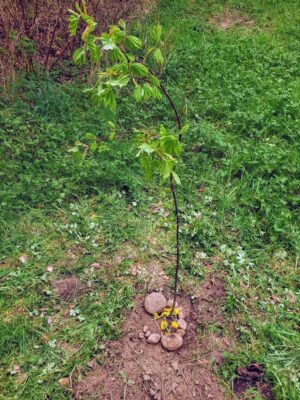
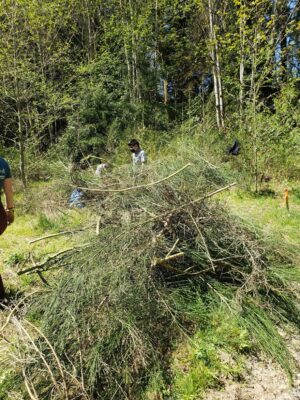
This combination of environmental education and stewardship is the current recipe for Land Labs, where preserves like Curley Creek Tyner can serve as learning, living laboratories. Using teaching philosophies and curriculum structure designed by The BEETLES Project of UC-Berkeley and Next Generation Science Standards, we now have a program to benefit our local schools that couples exploration with science education.
It was such a gift to witness students connecting with nature on different levels during the 5th and 6th grade field trips. Facilitating this experience not only fostered better relationships with nature (according to our pre- and post-survey results), but also increased the likelihood that landscapes like the Curley Creek Tyner Preserve will be protected in the future.

The Land Labs team will be working hard this summer to enhance curriculum, train educators, and integrate local organizations. Stay tuned to how you can get involved! If you have any questions about the program, please e-mail us at landlabs@greatpeninsula.org.
Thank you for reading,
Sierra Kross
Education Coordinator AmeriCorps VISTA
I would like to thank Catalyst Public Schools for allowing us to bring Land Labs to the community. Specifically Stephanie Layson, 5th grade teacher, was incredibly patient and enthusiastic as we were planning and facilitating the lessons. When developing curriculum, Dana Coggon significantly helped us to better understand invasive species education and outreach strategies in Kitsap County. GPC Stewardship Associate Micaela Petrini, only two weeks on the job, started offering incredibly necessary insight on the education program. Claire Voris, Events and Outreach Associate, thankfully advocated for funding this program and made this field trip possible. Her organization and dedication allowed Land Labs to exist! Janessa Hollmaier, Site Coordinator VISTA, stood by my side as we learned how to run an environmental education field trip. Lastly, thank you to Ali Erskine, Conservation Associate who came out to show 6th grade how to fly a drone. They were awestruck!
